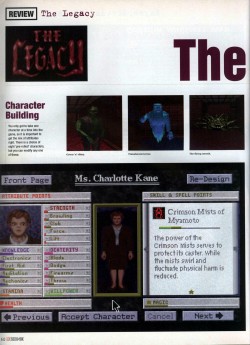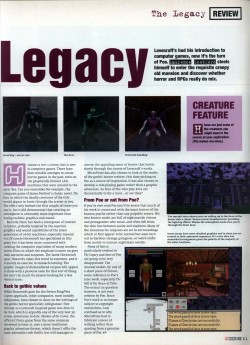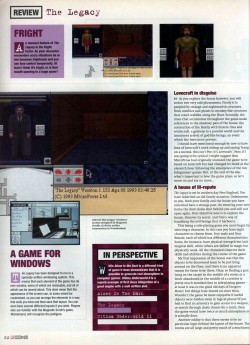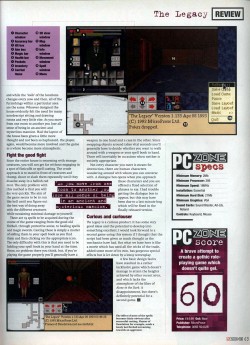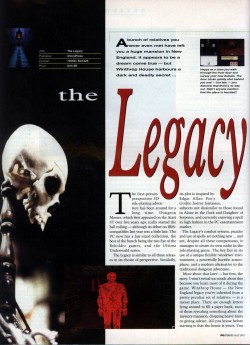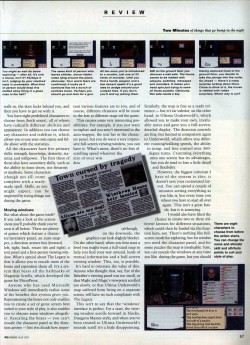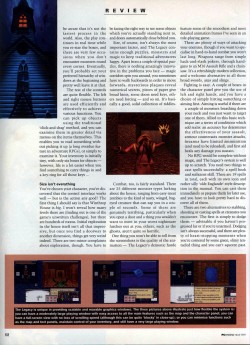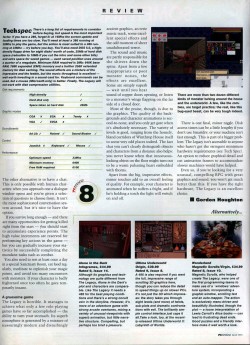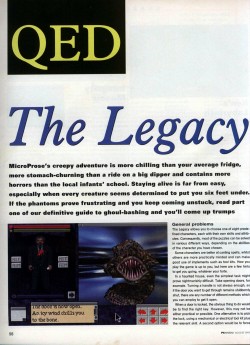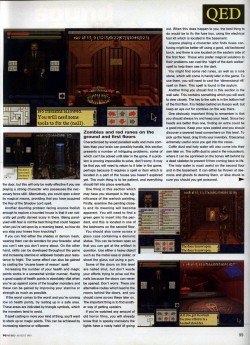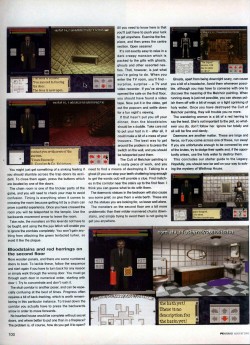At the end of part 2, I’d managed to explore all the upper levels of the house and was starting to have a proper look around the basement levels. This was slightly hindered by a dark god called Alberoth who used his satanic powers to block all three entryways to basement #2 simultaneously.
I decided that my main goal to start out today would be more searching around the basements for anything useful. This soon landed me a Japanese sword which proved a whole lot more effective than a baseball bat.
I also returned to the crypt level. There was a puzzle where I had to kill every skeleton (bearing in mind that they spring back to life if I walk on a dead one) before I could open a particular door and get to the second half of the map. From here on out I opted for the cowards option of dodging my way round further skeletons. My efforts were rewarded with a golden torc which appeared to protect me from the attacks of the master of the void later in the game.
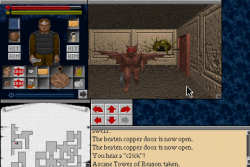
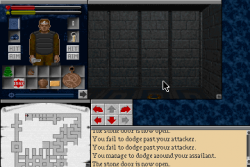
After this, progress ground to a halt again as I didn’t appear to have anywhere I could go. Eventually I figured out that a load of the locked doors around the map can be opened with a particular unlocking spell. I had tried this earlier but what I hadn’t realised was that even when casting the spell successfully the door still wouldn’t open 9 times out of ten which seems a little unfair. This means loads of saving and loading for a magically challenged character like the guy I’m playing here but huge swathes of the map were now open to me.
First stop is the games best weapon, an even bigger Japanese sword up on level 4. This can be powered up by returning the ashes of the samurai along with the shorter sword and placing them all together.
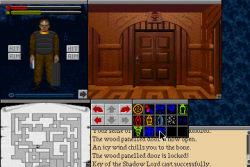
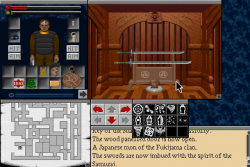
While I’m here I decide to go for the full samurai look and get hold of the best armour in the game. With this and the sword, I don’t have to run and hide from the monsters from here on out.
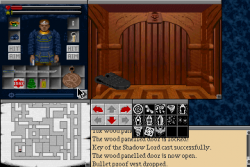
I head to the Egyptian level next and am able to explore much of the level by unlocking more doors with my key of the shadow lord spell. There are lots of illusory items down here that vanish when I try to pick them up and not so many real ones. I do find a flute that only plays F# which might not be the best instrument to get a tune out of but will come in useful later.
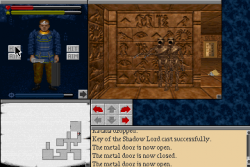
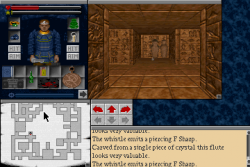
Once I’ve stepped on four pressure plates spread around the tomb, the middle of the level opens up and I can insert coins into slots to access a central area. There is a snag here in that I’m supposed to have 5 coins and I only have four and I never did manage to find that last one. Luckily for me this part of the game appears to be unnecessary.
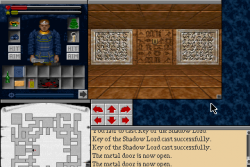
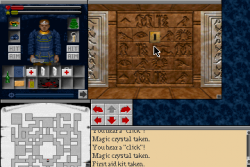
In the corner of the tomb is a small observatory. Using the astrolabe I found somewhere in the basement, I’m able to calculate that the stars have moved out of alignment so Alberoth won’t be able to skulk around the stairways any more. This doesn’t work without the astrolabe so in this case knowledge really is power it would seem.
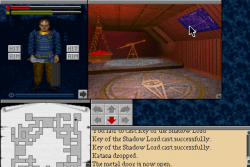
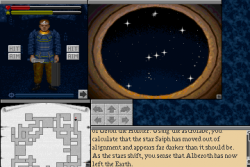
This opens up the lowest levels of the house where the inhabitants get ever stranger. All those inmates of the asylum have been turned into tentacle faced servitors who prowl these levels chucking fireballs at any intruders. In the middle is one of the dark triumvirate themselves who much to my surprise I managed to see off with my samurai blade. It won’t stop them popping up again later elsewhere though.
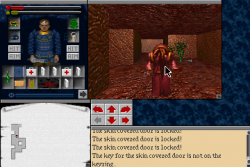
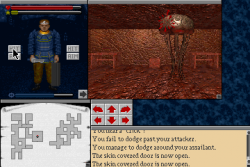
The southern exit of this room leads to a slimy cave section populated with the sea daemons I read about earlier. I think they are actually aliens although it’s never made entirely clear. Either way they prod tridents at me and generally get in the way while I’m trying to have a look around. Discretion is the better part of valour at this stage as even wearing all my Sunday best adventuring outfit they hurt.
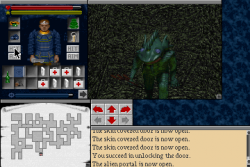
I discover an exit from the caves seemingly leading to death on the rocks below but stepping through actually takes me to what will turn out to be the final level in the game. This area is full of moving teleportation cubes which I have to avoid if I don’t want to get bounced all the way out of the level. There are also a load of firespawn floating about that block my path when trying to avoid said cubes. I don’t have the fire extinguisher at this point so it’s just as well that the samurai blade can make short work of them. While exploring this level I run into a forcefield which I’m told outright I can’t walk through without the eye of Agla. I know from the clue earlier that I need a meteorite fragment for that which I’m still looking for.
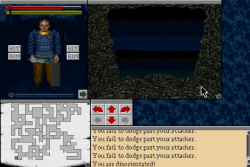
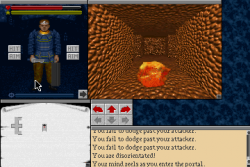
There is nowhere else to look except the caves level and right in the furthest and most difficult to reach corner is a room with a strange container made of crystal. Playing the flute smashes this and provided I time it right so that I don’t get shocked by the pillars on either side I can then pick up the meteorite within.
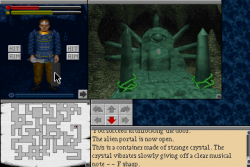
A clue from back in part 2 comes in handy here. I head for the room of the skulls in a higher basement level where I eventually work out that I need to use a hand mirror to bounce the beam of light onto a mark on the wall. This raises a pillar out of the ground. I pop the meteorite in, get the eye of Agla out and it’s time to head for the final boss battle.
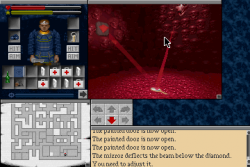
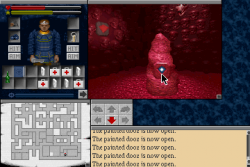
The final battle is a strange affair. Belthagor is hanging out behind a fake wall in a green void of some description. The moment I step in there he starts hurling spells at me and my swipes with a sword prove entirely ineffective. He is immune to anything except magical damage. Not ideal when I’ve been playing a warrior character. Luckily I have a load of experience left and the final encounter then becomes a trial and error affair of deciding exactly where to spend it.
What I learn at this latest possible stage of the game is that if I’d upped my willpower ever so slightly, all the spells would cost vastly less mana to cost, not to mention being more effective and the game would have been considerably easier. With my experience spent on this and my flames of desolation spell, Belthagor is something of a pushover and succumbs within seconds.
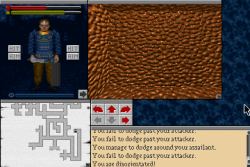
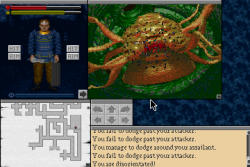
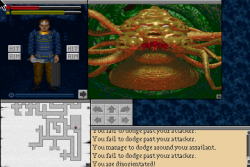
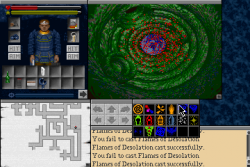
The final cutscene kicks in, my character dives out of a window and the house is sucked into a vortex in the sky and wiped off the face of the Earth. I then sell the land for redevelopment, presumably not mentioning the sea daemons in the caves below as I make enough money out of it to take off on a world cruise.
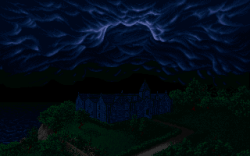
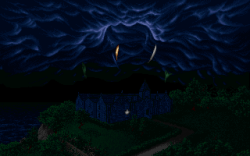
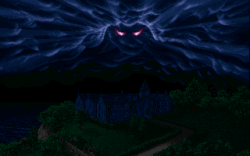
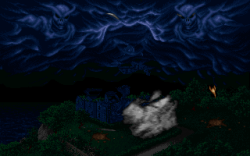
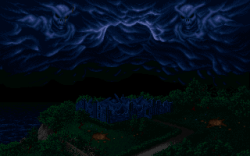
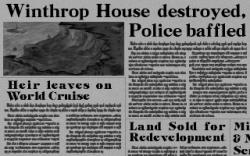
The Legacy is a game that I’d always remembered fondly but I was half expecting to be disappointed returning to it again all these years later. If anything it turned out to be better than I remembered, if a little different. For one thing, it isn’t a conventional RPG in the sense that I understand one. Stats are definitely important but combat is largely avoidable, and the player usually at a disadvantage whatever they do. The Legacy is far more about the puzzles. I wouldn’t say any of these are particularly outstanding but they are all solid enough and most importantly fair. Every part of each level needs searching thoroughly to beat this game but there are enough clues for the careful player to win without outside help.
Where The Legacy really succeeds is the atmosphere which is extremely dark, dreary and generally creepy. There is a distinct lack of plot which if anything serves to leave the player further off balance. I never was entirely sure just what exactly was going on in the twisted world of Winthrop House. Imagination is ultimately always more scary than anything visualised and this was especially true with the graphics available in 1993.
The downside of that meagre plot is that I don’t feel like I’ve accomplished all that much now I’ve beaten the game. It’s a happy ending as such but somehow anticlimactic and downbeat. When you exit back to DOS, you are asked to hold onto the winner.inf file which must have been hinting at a sequel. Sadly that never happened and Magnetic Scrolls were no more after this. It wasn’t a bad way to bow out of the business but they should have been around for years more.
The Legacy deserves to be remembered for more than killing off Magnetic Scrolls. I can’t think of any other game I’ve played that was quite like it which might have been the problem as it doesn’t fit any particular niche. It’s a cocktail of adventure game, dungeon crawler and survival horror with a splash of Lovecraft. This may not be to everyone’s taste but personally I’d regard it as something of a hidden gem. I wish more first person RPG’s in this era would have been willing to try something different outside of the usual fantasy clichés.
The Legacy gets a wholehearted vote of approval from me then. For the next post, I’ll attempt to dig out any articles I can find from the time and see what the UK press thought about it.

